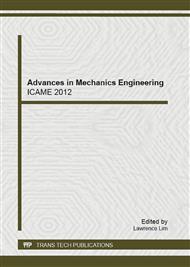p.1255
p.1259
p.1264
p.1269
p.1274
p.1278
p.1282
p.1287
p.1292
Study on the Optimized Blanking Allowance for Fine-Blanking with Negative Clearance through Simulation and Optimization Methods
Abstract:
Being an important blanking parameter, the blanking allowance of fine-blanking with negative clearance has a direct relationship with the quality of work piece and ejector force. The full process of fine-blanking with negative clearance for ASTM-1022 in different blanking allowances is simulated through the finite element analysis software DEFORM-2D, then the ejector force under different blanking allowances is measured through the experiment of fine-blanking with negative clearance. Based on the analysis of the ejector force, the proportion of burnish band and the work piece fracture, the following conclusions are summarized. The size of blanking allowance is not related with the blanking force with the sheet entering plastic state and the maximum blanking force, and is only related with the ejector force. When the value of the blanking allowance is between 0.1mm and 0.3mm, the friction force between the punch-die and the sheet affects ejector force, and the ejector force is not related with the mechanical properties of material. When the value of the blanking allowance is between 0.5mm and 0.8mm, with the blanking allowance increasing, the ejector force increases rapidly.
Info:
Periodical:
Pages:
1274-1277
Citation:
Online since:
November 2012
Authors:
Price:
Сopyright:
© 2012 Trans Tech Publications Ltd. All Rights Reserved
Share:
Citation:


